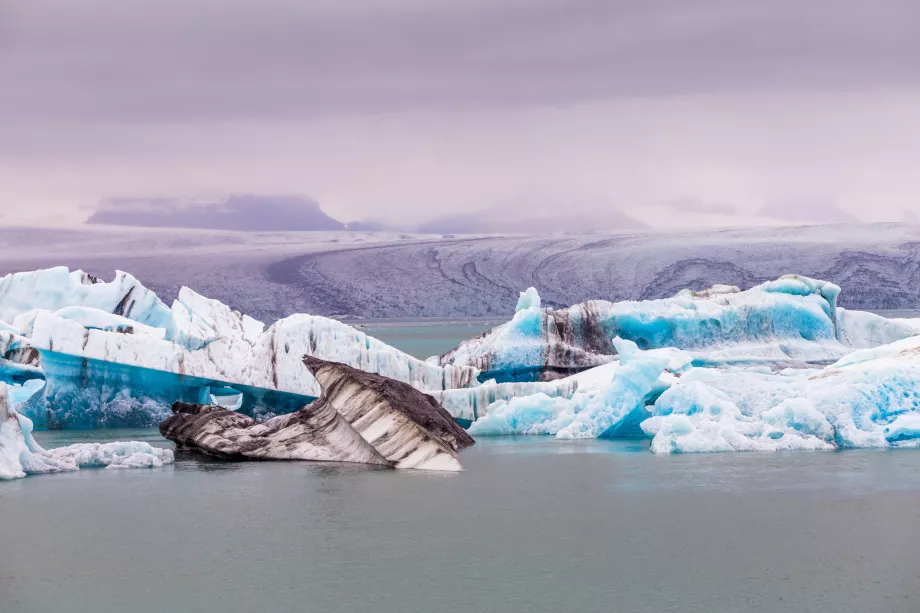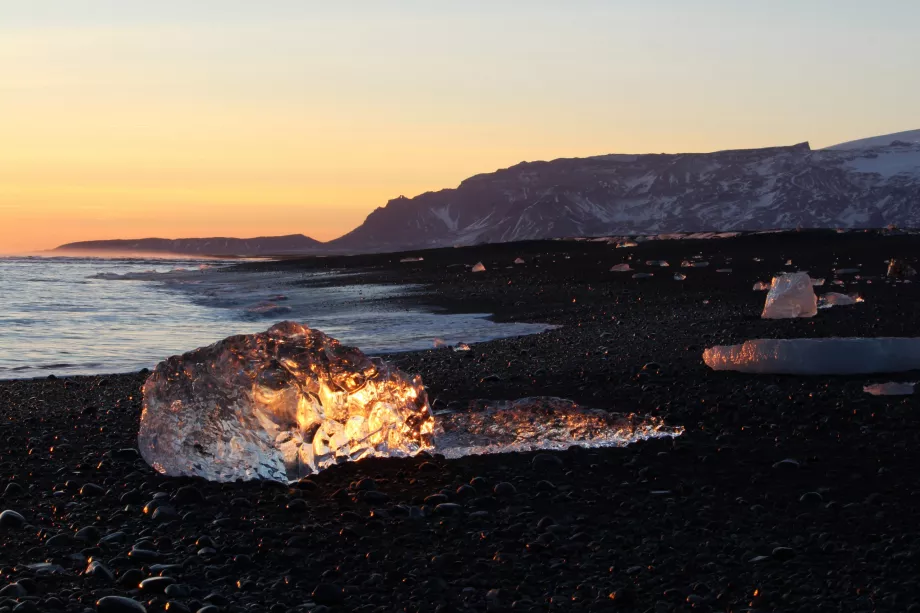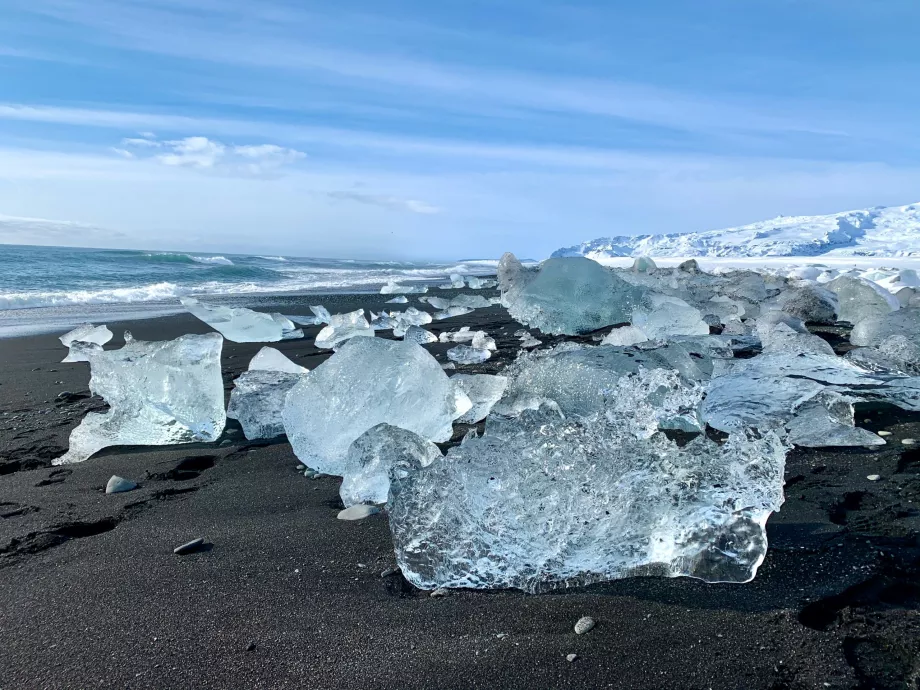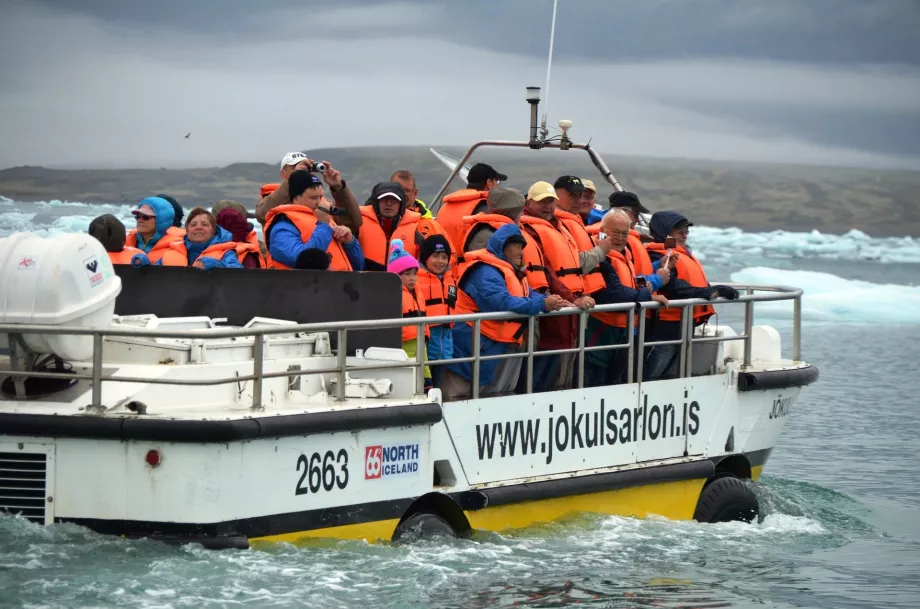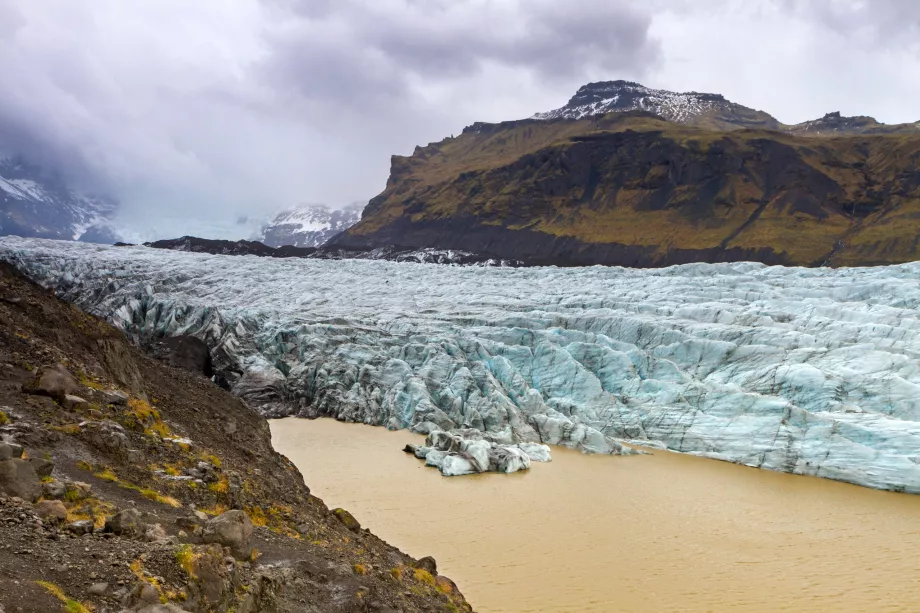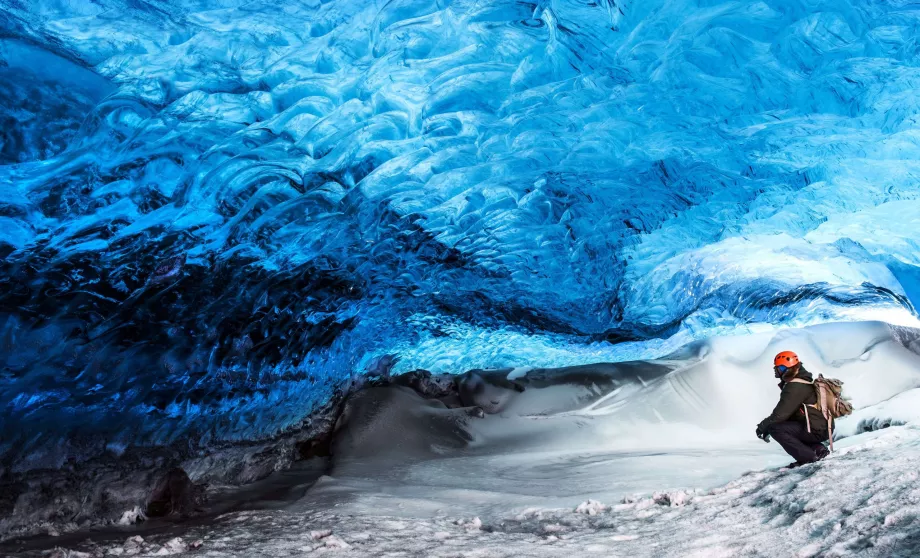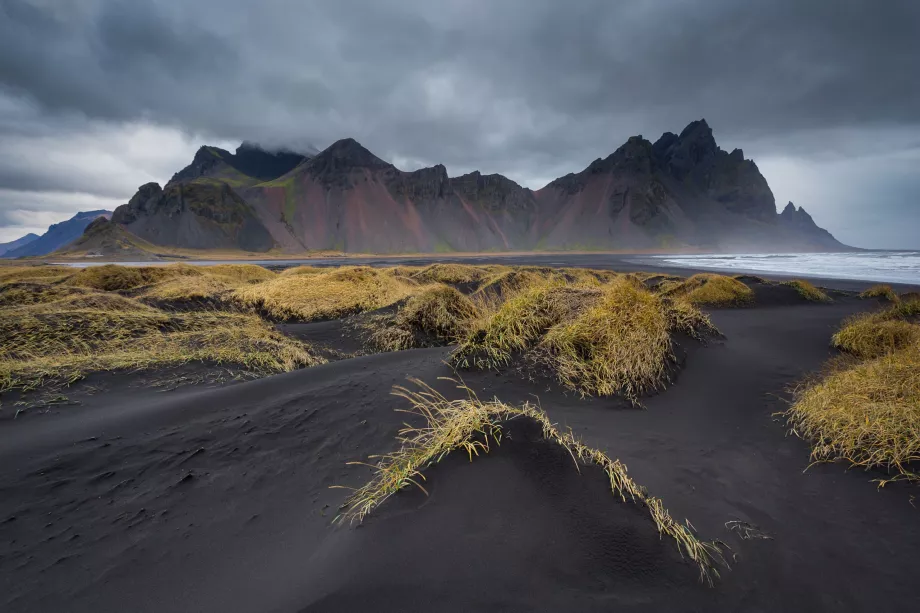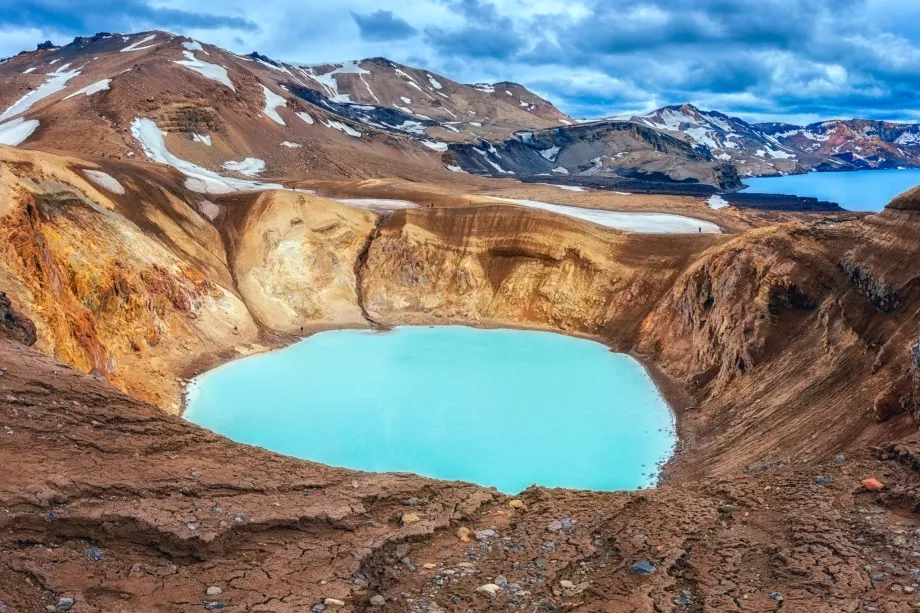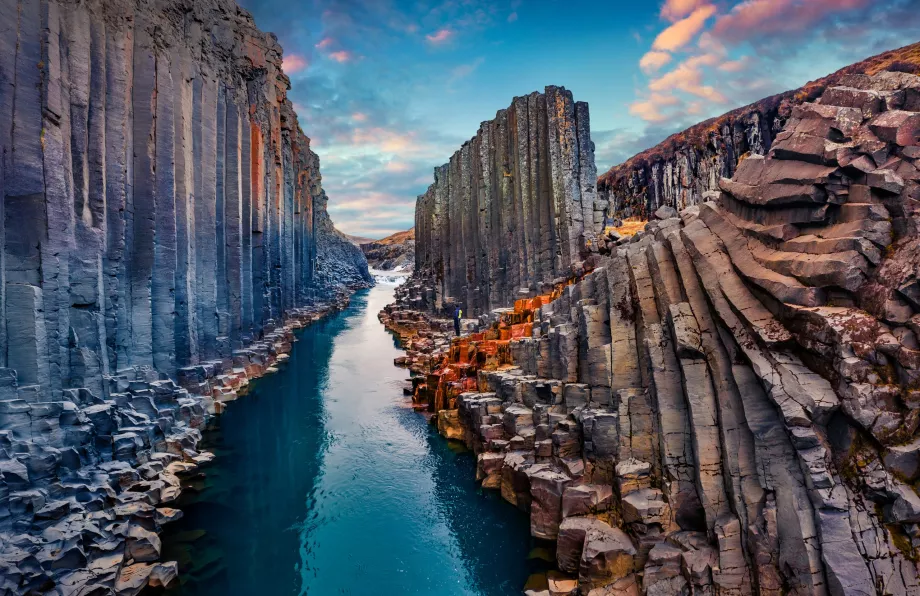Jökulsárlón

The area around the huge glacial lake Jökulsárlón is one of Iceland's "must-sees" and one of the most beautiful places in the world for photographers. The ever-expanding lake, now about 20 square kilometres in size , is dotted with ice floes of all sizes, creating a magical setting whatever the weather.
Compare car rental prices - Iceland
A lake in a glacial moraine
The lake lies in the former moraine of the Breiðamerkurjökull glacier, which is part of Europe's largest glacier, Vatnajökull. As recently as the 1980s, Breiðamerkurjökull reached the sea, but then began to melt rapidly and retreat inland, forming Lake Jökulsárlón. This has been getting bigger and bigger year by year with water from the melting glacier, from the face of which the ice floes break off and float silently and mystically on the surface of the lake.
The glacial ice floes can be as big as a small apartment building in some places, and as small as a few dozen centimeters in others. The play of sunlight or darkly clouded sky in the background creates an incredible spectacle in any season.
Lake Jökulsárlón is not actually a true lake, but rather a lagoon, as it is only connected to the sea by the Jökulsá River, which is about 250 metres long.
Diamond Beach
At the mouth of the Jökulsárlón lagoon into the sea, you will then come across another of Iceland's "must-see" beaches called Diamond Beach. The reason for the name will be apparent at first glance. The black volcanic sand beach is literally littered with small melting ice floes that flow out of the lagoon into the sea, only to be washed ashore by the waves.
The shrubs on Diamond Beach vary in size from 20 cm to 2 metres and give the impression of thousands of giant diamonds lying on the beach.
The local name for Diamond Beach is Fellsfjara and the "diamonds" in the form of ice bushes can be found for about 5 km on either side of the lagoon mouth.
Cruises on the lake
Many local travel agencies offer organized cruises between the ice floes and trips to the glacial caves to the parking lot on the shores of the lagoon. You can take a ride on classic boats or amphibious vehicles that can both run on land and float on water. Example pricing:
- Lake cruise - from 6 000 isk for 35 minutes or 11 000 isk for one hour
- Trip to the ice caves (only possible in winter) - from 19 000 isk, for approx. 2.5 to 3 hours
Trips and cruises can be booked online with agencies such as Glacier Lagoon, Troll Expeditions or Glacier Journey.
How to get there?
Jökulsárlón Lagoon with Diamond Beach is located right off the Icelandic Ring Road 1 and is accessible year-round by all types of cars. It lies between the other famous places Skaftafell and Vestrahorn. The drive from Reykjavik is 390 km and takes about 5 hours (route map: google.com/maps).
The parking fee is 1000 isk and can be paid via the Parka.app.
From the large car park, the lagoon and Diamond Beach can be reached on foot along marked trails within a 2-minute walk.
There are two small snack bars in the car park, and you can use the toilets and the electric car charging point.
Accommodation
The nearest settlement where you can stay is a cluster of houses called Reynivellir. Well-rated accommodation is available from 110 eur per night, for example a guesthouse Skyrhúsid Guest House or from 147 eur a classic 3* Hali Country Hotel.
What to see around
Discover all the places to see in Iceland.
Any questions left?
If you have any questions or comments about the article...

